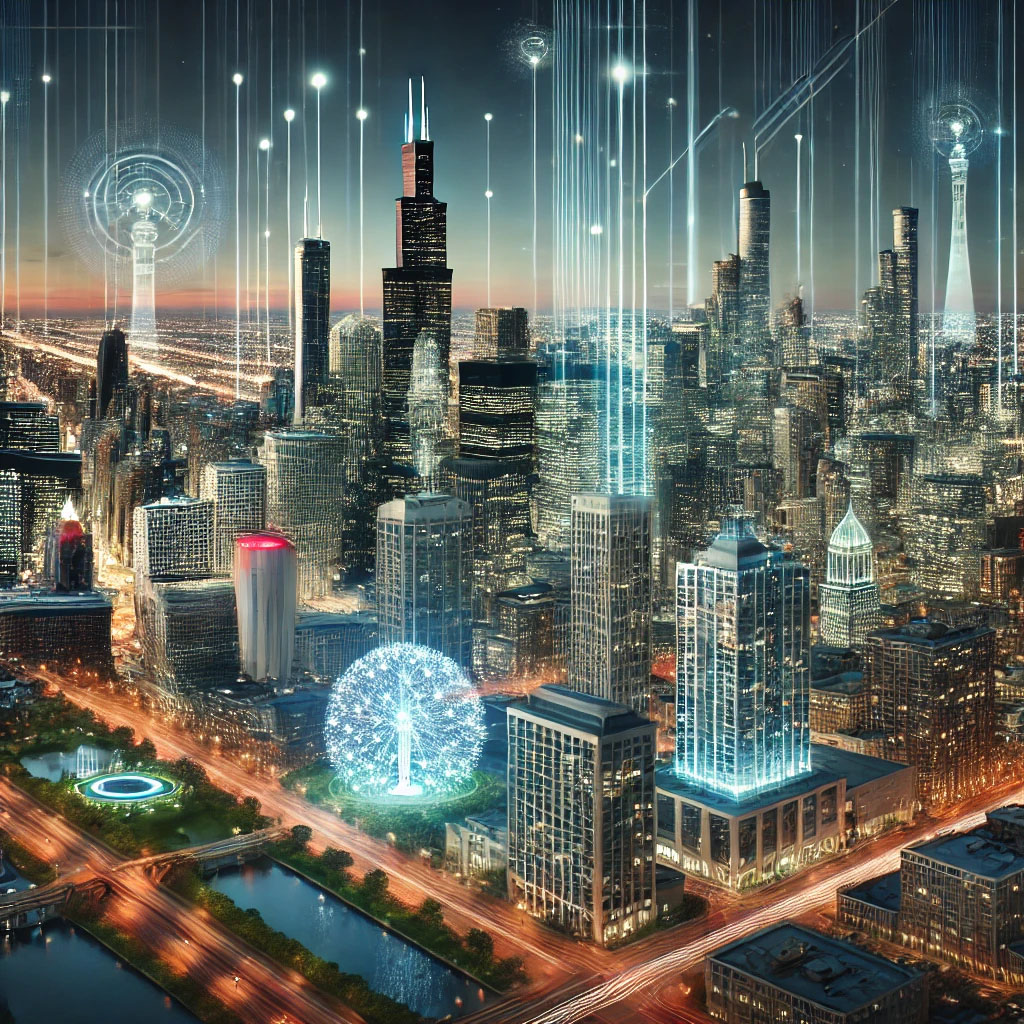As we move into the 21st century, the housing market for larger households in Chicago is experiencing a transformative shift. This change in consumerism has primarily been driven by advancements in internet technology, like smart-home automation, and evolving resident expectations.
The year 2025 is set to usher in a range of innovative trends that will redefine how residents connect, interact, and live in multifamily properties. From cutting-edge technologies, lightning-fast internet, and enticing green incentives, here’s a comprehensive look at what’s on the horizon for multifamily internet services in Chicago.
Ultra-Fast Gigabit Internet
In 2025, gigabit-speed internet is projected to become a baseline expectation for multifamily residents nationwide. With fiber-optic technology becoming more widespread, internet service providers are pushing the boundaries of speed and reliability. Gigabit internet, offering speeds up to 1,000 Mbps, will let residents stream 4K and 8K content seamlessly, engage in fast-paced gaming systems, and support multiple smart devices without compromising performance or efficiency.
The deployment of fiber optic networks in urban areas, including multifamily buildings, is anticipated to grow in 2025. For those unfamiliar, fiber optic cables are a specific type of cable that uses light to transfer data at incredibly fast speeds. Unlike traditional copper wires that many office and residential buildings commonly have, these upgraded cables are impervious to electromagnetic interference.
Only certain residential buildings currently have fiber optic infrastructure. Landlords and property managers will need to ensure that their buildings are equipped to support fast internet speeds, including upgraded wiring and routers. As competition among interest service providers intensifies, the pressure will be on to deliver high speeds, consistent performance, and attentive customer support.
5G and 56
5G technology, known for its low latency and high-speed data transfer, will become increasingly prevalent in Chicago’s multifamily housing world. This next-generation wireless technology promises to revolutionize internet connectivity, particularly for mobile devices and smart home applications. Residents will benefit from faster, more reliable connections that enhance the functionality of their smart home systems and enable seamless integration with the Internet of Things (IoT).
Looking further ahead, the development of 6G technology may start to take shape by 2025. Although still in its early stages, 6G is expected to offer even greater speeds and lower latency than 5G, potentially supporting advancements like augmented reality and virtual reality experiences. Multifamily buildings prepared for these technologies will attract tech-savvy residents looking for cutting-edge, enhanced living environments.
Tech and Resident Input
In a forward-thinking approach, Chicago is leveraging technology and resident input to enhance urban services, a trend that is also shaping the multifamily housing market. By harnessing data analytics and digital tools, the city optimizes service delivery in areas such as public safety, transportation, sanitation, and housing.
This data-driven strategy is mirrored in the multifamily sector, where property managers increasingly use advanced technologies to address resident needs and streamline services. Platforms for resident feedback, including mobile apps and online surveys, are becoming standard, allowing for real-time communication and tailored improvements. As these innovations continue to evolve, they promise to create more responsive and efficient living environments, reflecting a broader trend toward smart, connected communities.
Smart Home Integration
Smart home technology is no longer a luxury; it is becoming a standard expectation for residents, from young adults to multifamily households. By 2025, properties that offer integrated smart home systems will have a competitive edge in the real estate market. These systems can include smart thermostats, lighting controls, security cameras, and voice-activated assistants, all of which can be managed through a central hub or mobile apps. Integrating these systems requires a robust and reliable internet connection to ensure that all devices function smoothly and securely. Multifamily buildings will need to invest in fiber optic infrastructure to support a wide range of smart devices. Providing residents with fast internet that can power many high-speed technologies at once will make residential spots more attractive in 2025.
Enhanced Wi-Fi Solutions
As multifamily properties grow in size and complexity, traditional Wi-Fi solutions may no longer suffice. To meet the demands of residents who expect strong and consistent connectivity throughout the building, property managers will need to adopt advanced Wi-Fi technologies. Mesh networking systems, which use multiple nodes to distribute the internet signal evenly, will become more common. These systems can eliminate dead zones and ensure reliable connectivity in every corner of the property.
Additionally, Wi-Fi 6 technology, which offers faster speeds and improved performance in crowded environments, will become increasingly important. This technology is designed to handle multiple devices more efficiently, making it ideal for multifamily buildings where many residents may be simultaneously using the internet.
Green Homes Chicago
As sustainability becomes a crucial aspect of modern living, Chicago’s multifamily housing market is reflecting this trend through initiatives like the Green Homes Chicago program. This program supports homeowners in implementing energy-efficient upgrades by offering free energy assessments, financial incentives, and access to green building resources. These upgrades can include high-end electric appliances to replace gas-powered ones like stoves and ovens, as well as sustainable HVAC systems.
As multifamily properties increasingly adopt these green practices, the integration of energy-efficient technologies will become more prevalent. This trend not only helps residents reduce their energy consumption and utility bills but also aligns with the broader movement towards environmentally conscious living, enhancing the appeal of smart, sustainable housing solutions.
Moving Forward
The multifamily housing market in Chicago is on the brink of a significant technological transformation. As we approach 2025, the integration of ultra-fast gigabit internet, 5G technology, advanced smart home systems, enhanced cybersecurity, and green tech incentives will reshape residents’ living experiences. Additionally, the move towards customized service packages and sustainability will reflect changing expectations and priorities for homeowners.
For city property managers and developers, staying ahead of these trends will be crucial to meeting resident demands and maintaining a competitive edge. Embracing these advancements will not only enhance the quality of life for residents but also set a new standard for what it means to live in a connected, modern family in an urban community.
